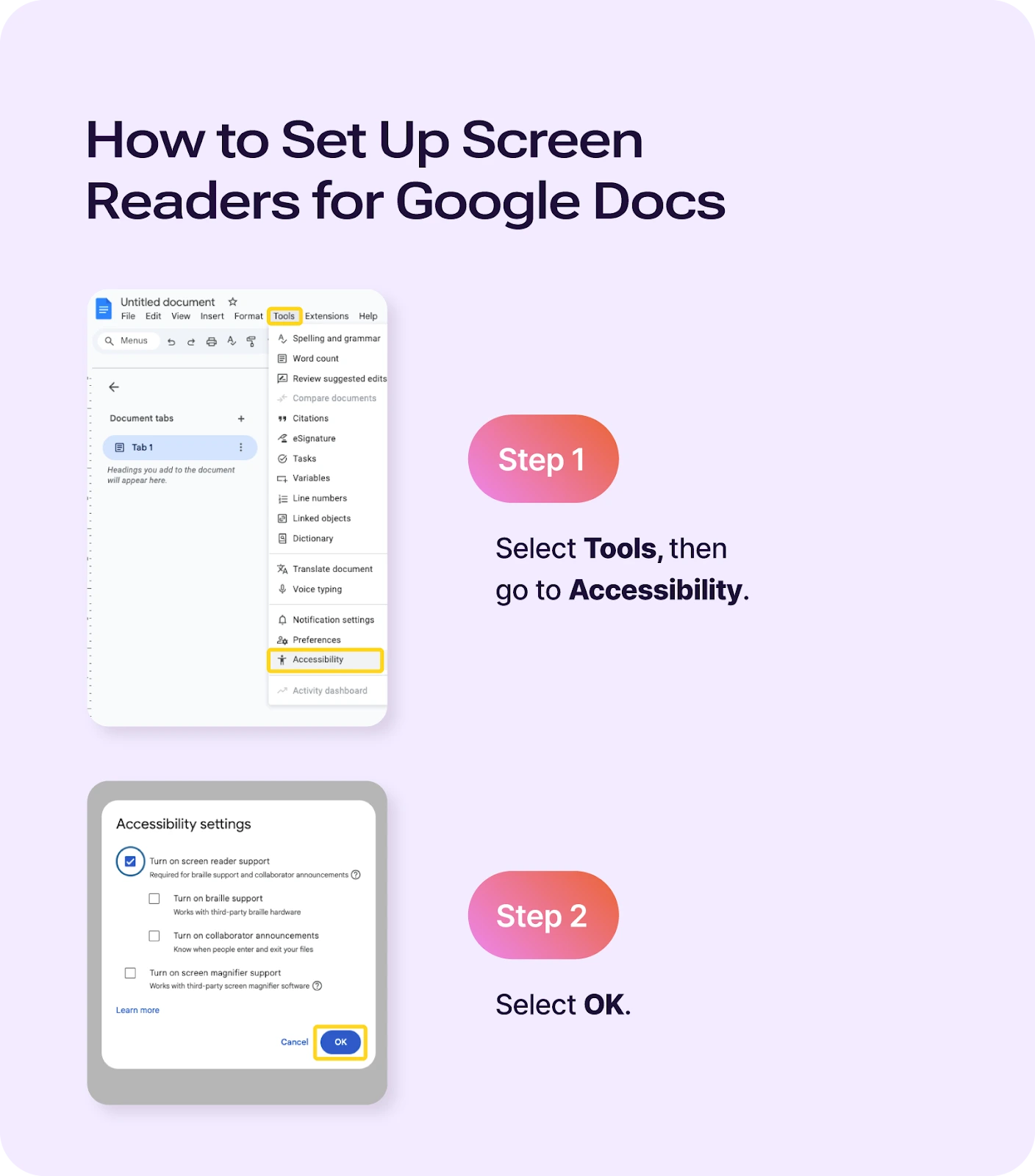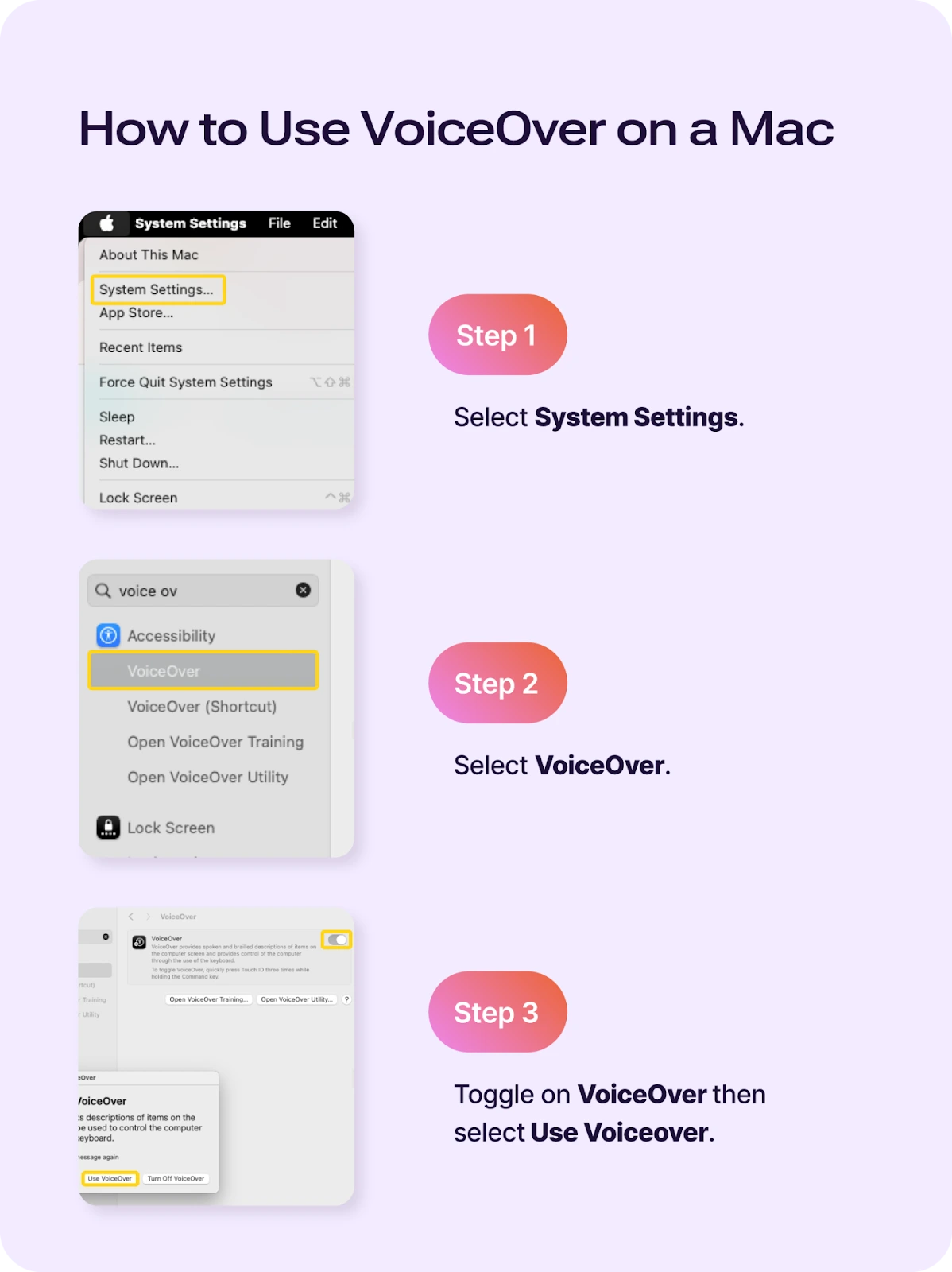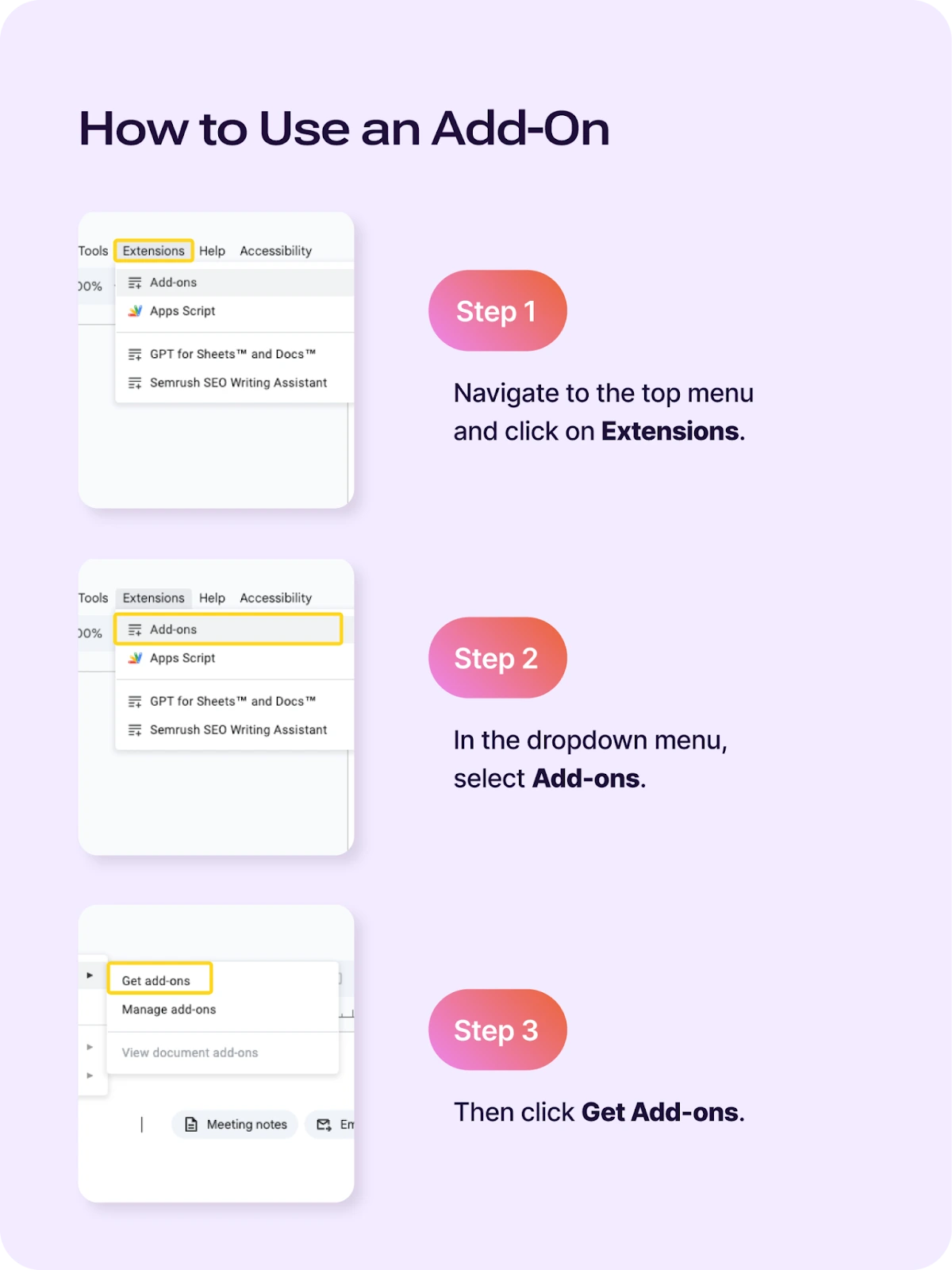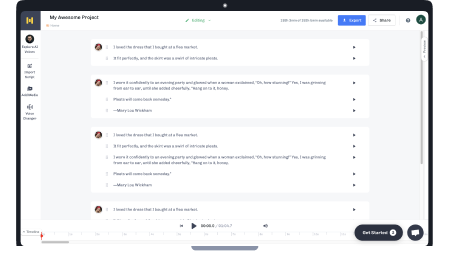How To Use Text-To-Speech on Google Docs

Learning how to use text-to-speech (TTS) on Google Docs can help improve accessibility for those with visual impairments or reading difficulties, while also boosting productivity by allowing multitasking and enhancing comprehension.
With the global TTS market expected to hit $12.5 billion by 2031, this powerful technology is a solution for students, professionals, and anyone looking to overcome challenges like reading fatigue or accessibility barriers.
In this blog, we’ll walk you through how to use TTS on Google Docs to enhance your workflow, make your documents more accessible, and transform the way you work with text. Let’s dive in!
Benefits of Using Text-To-Speech on Google Docs
TTS on Google Docs unlocks a multitude of benefits, especially for online businesses seeking to enhance accessibility, improve productivity, and cater to diverse audiences.
- Accessibility: Text-to-speech improves the accessibility of written content. If, for instance, you are a teacher teaching visually impaired students, you can convert written material on Google Docs into an accessible audio format. This ensures that every piece of information is readily available to visually impaired students, creating an inclusive learning environment for everyone.
- Multitasking: Juggling tasks? TTS lets you listen to your documents while handling other responsibilities, keeping you productive even during the busiest days.
- Proofreading and editing: Listening to your draft out loud can highlight errors, awkward sentences, and inconsistencies that may escape your eye during traditional edits, leading to sharper content.
- Reducing eye strain: Hours of screen time can strain your eyes. TTS offers a break, letting you absorb information without the need to stare at your screen.
- Language learning: Text-to-speech technology is a powerful tool for language learners. By hearing text read aloud in a clear, natural voice, users can improve their pronunciation by mimicking correct intonation and rhythm. TTS also strengthens listening skills, allowing learners to develop an ear for the nuances of a language, such as tone, stress, and pace.
How To Enable Text To Speech on Google Docs
Enabling text-to-speech in Google Docs is easier than you might think, with multiple options available to suit your needs. Whether you prefer using built-in accessibility settings or exploring third-party tools like you can transform text into audio effortlessly. These solutions are designed to enhance accessibility, boost productivity, and provide a personalized experience, regardless of the device or platform you use.
Option 1: Set Up Screen Readers for Google Docs
Screen readers can be an excellent choice for Windows users, especially for those who rely on accessibility tools or prefer an audio-based approach to reading and editing text. Screen readers help users with visual impairments or those who prefer auditory learning. Here’s how to enable screen reader support in Google Docs:
- Open Google Docs.
- Click on Tools in the top menu and select Accessibility settings.
- Check the box for Turn on screen reader support and click OK.

NVDA for Windows Users
If you're using Windows, NVDA is a great option for text-to-speech functionality. Follow this guide to set up and use the latest version of NVDA with Google Chrome.
- Open a document in Google Docs.
- Enable Screen Reader Support:
- Listen for the message, "Screen reader support enabled."
- If you don’t hear it, press Ctrl + Alt + Z to enable screen reader support.
- Press NVDA + Ctrl + K to open the keyboard settings.
- Turn off Speak typed characters and Speak typed words to avoid distractions while navigating your document.
Tip: When using NVDA, you can use the shift key to pause or resume speech. This allows you to control the flow of reading without having to stop navigation, ensuring you can keep up with the document and process information at your own pace.
VoiceOver for macOS
VoiceOver is a built-in screen reader available on all macOS devices, providing seamless text-to-speech functionality without the need for additional downloads. Here’s how you can use it:
1. Navigate to System Settings, select VoiceOver, and toggle the feature on to activate it.
2. Open a document in Google Docs, and VoiceOver will start reading the document automatically.
Tip: You can modify the speaking rate, pitch, and volume or switch to a different voice. To do this, press and hold VO-Command-Shift, then press the right arrow key until you hear the setting you wish to adjust. To enable text-to-speech in Google Docs on a MacBook, use the keyboard shortcut: Option + Esc.

ChromeVox
Here is how to use ChromeVox:
1. Download the ChromeVox extension on your Google Chrome browser.
2. Open your Google Docs, select the text you want to read and the ChromeVox extension will read the text aloud using its screen reader option.
Be mindful to have only one document open at a time. If multiple Google Docs are open, the extension will start reading each one of them.
Tip: To read the entire page, press Ctrl + Alt + down arrow.
Option 2: Use a Chrome Extension
If you’re looking for a quick and versatile way to enable text-to-speech on Google Docs, a Chrome extension might be the perfect solution. These extensions are easy to install and often come with customizable features like voice selection and playback speed. Unlike screen readers, Chrome extensions are more user-friendly and designed specifically for text-to-speech functionality, offering a smoother and more intuitive experience. Let’s explore how to set these up for your documents.
Read Aloud
Read Aloud is a popular Chrome extension that turns text into speech with just a few clicks. It’s simple to use, offering the ability to read entire pages or selected text directly within your browser.
- Open the Chrome Web Store.
- Search for Read Aloud.
- Click Add to Chrome.
- Confirm the installation.
To read the entire page:
- Open the webpage you want to read.
- Click the Read Aloud icon (orange megaphone) in your Chrome toolbar.
- The entire page will be read aloud.
To read selected text:
- Select the specific text you want to hear.
- Right-click on the selected text and choose Read Aloud.
SpeakIt
SpeakIt is a straightforward Chrome extension designed for quick text-to-speech functionality. It allows you to easily convert highlighted text into audio, making it an excellent tool for multitasking or accessibility needs.
- Search for "SpeakIt! Text-to-speech for Chrome” on Chrome Web Store.
- Click Add to Chrome.
- Click the puzzle piece icon in your Chrome toolbar.
- Find the SpeakIt icon and pin it to the toolbar.
- Highlight the text you want to hear.
- Click the SpeakIt icon in your toolbar.
Read&Write for Google Chrome
Read&Write for Google Chrome is for students and professionals alike. It not only provides text-to-speech functionality but also includes features like adjustable voice settings, making it highly customizable to suit individual preferences.
- Search for "Read&Write for Google Chrome” on Chrome Web Store.
- Click Add to Chrome.
- Click the Read&Write icon in your Chrome toolbar.
- Highlight the text you want to hear.
- Click the Speak button on the Read&Write toolbar.
Tip: For more customization, click the gear icon on the Read&Write toolbar to adjust settings like voice, speed, and pitch.
Option 3: Utilize Mobile Apps for Seamless On-the-Go Access
- Google Text-to-Speech: Google's built-in Text-to-Speech feature offers a simple solution for reading text aloud on your Android device. Simply highlight the text you want to hear, and Google Text-to-Speech will read it to you. Customize the voice, speed, and pitch to your preference.
- NaturalReader: NaturalReader converts text into natural-sounding speech. You can upload documents, articles, or web pages to be read aloud. It also supports a variety of languages and voices, making it a great choice for language learners.
- Voice Dream Reader: Voice Dream Reader is a customizable text-to-speech app designed for accessibility. It offers advanced features like text highlighting, dictionary lookup, and integration with popular reading apps. It's ideal for users with visual impairments or those who simply want to multitask.
Option 4: Use an Add-On
Add-ons offer a seamless, integrated experience within Google Docs, making them a more cohesive option than screen readers or extensions. Designed specifically for Google Workspace, they provide advanced features and are easy to manage directly in your document. Let’s explore how to set up and use them for text-to-speech.
- Open your Google Docs document in the Google Chrome browser.
- Navigate to the top menu and click on Extensions.
- In the dropdown menu, select Add-ons and then click Get Add-ons.

Use Murf's TTS as an Alternative to Google Docs TTS Voiceover
Murf stands out as a superior alternative to a text-to-speech extension for several reasons:
- Enhanced voice quality: Murf is renowned for its exceptional voice quality. The AI-generated voices produced by Murf sound more natural, human-like, and expressive compared to the generic text-to- speech voices offered by Google Docs.
- Audio customizations: Murf's powerful audio editing features set it apart from other text-to-speech extensions. Users can alter the volume levels to provide the best clarity, highlight particular words or phrases, change the pitch to create various moods, and adjust the pitch.
- Downloadable TTS files: Murf surpasses Google Docs' constraints by allowing users to download the text-to-speech files that are produced.
Multi-language support: Murf excels in supporting a wide range of languages, allowing users to create content in different languages. Moreover, users can select different accents of the same language for better personalization, including British, Indian English, Cantonese Chinese, and many more.
Meet Murf Falcon: The Fastest, Most Efficient Text to Speech API
Murf Falcon is engineered to deliver human-like speech at an industry leading model latency of 55 ms across the globe. Use Falcon to deploy AI voice agents that not only talk like regular humans, but also deliver the speech at blazing fast speed with ultra precision.
Falcon is the only TTS API that consistently maintains time-to-first-audio under 130 ms across 10+ global regions, even when processing up to 10,000 calls at the same time. Falcon delivers uninterrupted, natural speech. No lag, no clipped phrases, no robotic tone.
Engineered for Real-Time Performance
Falcon’s architecture is tuned specifically for ultra-low latency and responsiveness:
- Model latency under 55 ms
- Time-to-first-audio under 130 ms
- Edge deployment across 10+ regions for global consistency
Its lightweight, compute-efficient model outperforms larger LLM-based TTS systems on context precision and response timing delivering premium naturalness without inflated infrastructure demands.
Human-Like Speech, in Any Language
Falcon ensures voices sound fluent and expressive:
- 35+ languages, 150+ expressive voices
- Code-mixed multilingual output without accent distortion
- 99.38% pronunciation accuracy
- Conversational prosody for natural tone, rhythm, and pauses
Falcon separates how words are pronounced from the unique qualities of the speaker’s voice, preventing odd tone changes. This also enables the voice to switch languages smoothly in the middle of a sentence.Your AI voice doesn’t just speak multiple languages, it sounds native in each.
Integrates in Minutes
Falcon fits easily into modern development stacks:
- RESTful API
- Python, JavaScript, and cURL SDKs
- Works with Twilio, Anthropic Claude, Discord, and more
Go from API key to live call in minutes, no complex provisioning or specialized infrastructure needed.
Stable and Cost-Efficient at Scale
- Supports 10,000+ concurrent calls with no latency drop
- Predictable performance worldwide via edge routing
- On-prem deployment option for full internal control
- Priced at 1¢ per minute, reducing voice agent costs by up to 50%
Fast everywhere. Accurate always. Affordable at scale. Try Murf Falcon now!

Frequently Asked Questions
Can I use text-to-speech on Google Docs for free?
.svg)
Yes, Google Docs has a free text to talk feature, but it requires support from screen reader plugins on your browser. These plugins are often free to use, but may impose some restrictions on the voices or languages available or the duration of the voiceover.
What languages are supported by text-to-speech on Google Docs?
.svg)
Google’s text-to-speech feature supports a wide range of languages and accents, such as English, Chinese, Spanish, French, German, Italian, and more, depending on the screen reader tool you use. The plugin you install should list the supported languages.
Is there a limit on the length of text for TTS on Google Docs?
.svg)
There are no limits on the length of text imposed by Google Docs. Limits, if any, will depend on the screen reader support or text-to-speech tool you use, especially if using a free version.
Can I use text-to-speech for editing and proofreading in Google Docs?
.svg)
The text-to-speech feature in Google Docs is particularly useful when editing or proofreading. Having the document read out loud can help you spot grammatical errors, long, awkward sentences, and repeated phrases that you may miss during visual reading. This facilitates a better and more economical editing procedure.
Does TTS work with images and non-text elements in Google Docs?
.svg)
No, at this point, the TTS function incorporated in Google Docs does not support translating images and non-text elements. Some third-party text-to-speech applications or web apps can provide this function.
Can I customize the voice or accent in text-to-speech on Google Docs?
.svg)
Most speech readers and text-to-speech tools provide a range of voices and various accents, according to your preference. Use their plugin interface to choose a voice and accent that best resonates with you.
Can I use text-to-speech Google Docs in multiple languages within the same document?
.svg)
Yes, you can use the text-to-speech feature in Google Docs with multiple languages within the same document. Just ensure you select the right voices and languages from your screen reader support plugin UI for the said selection.















